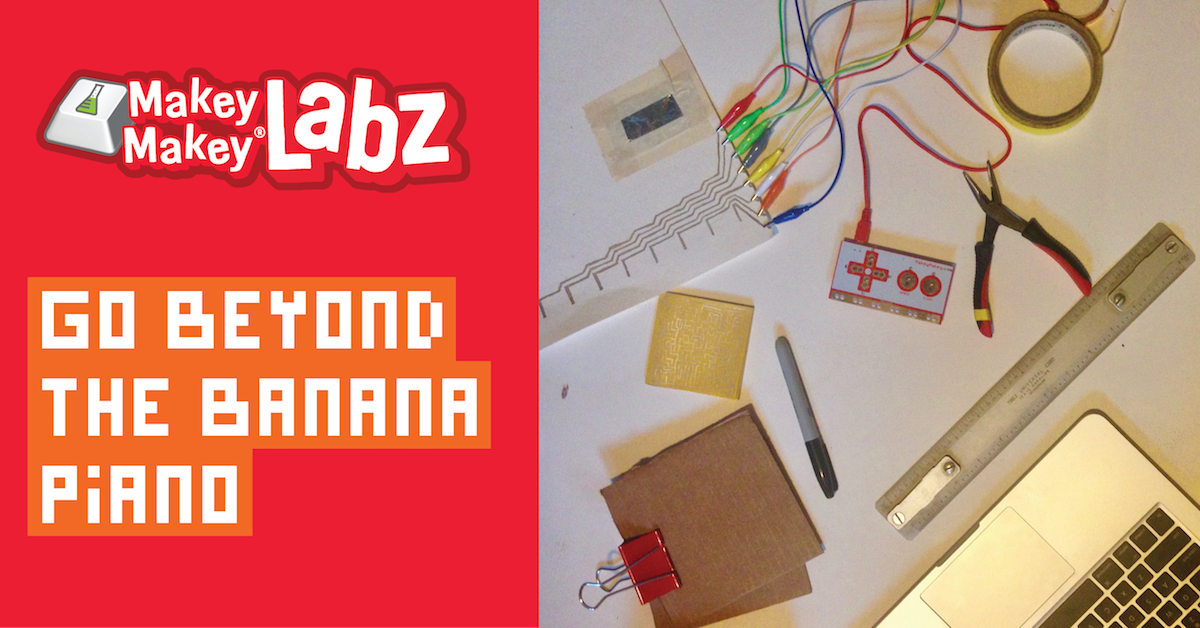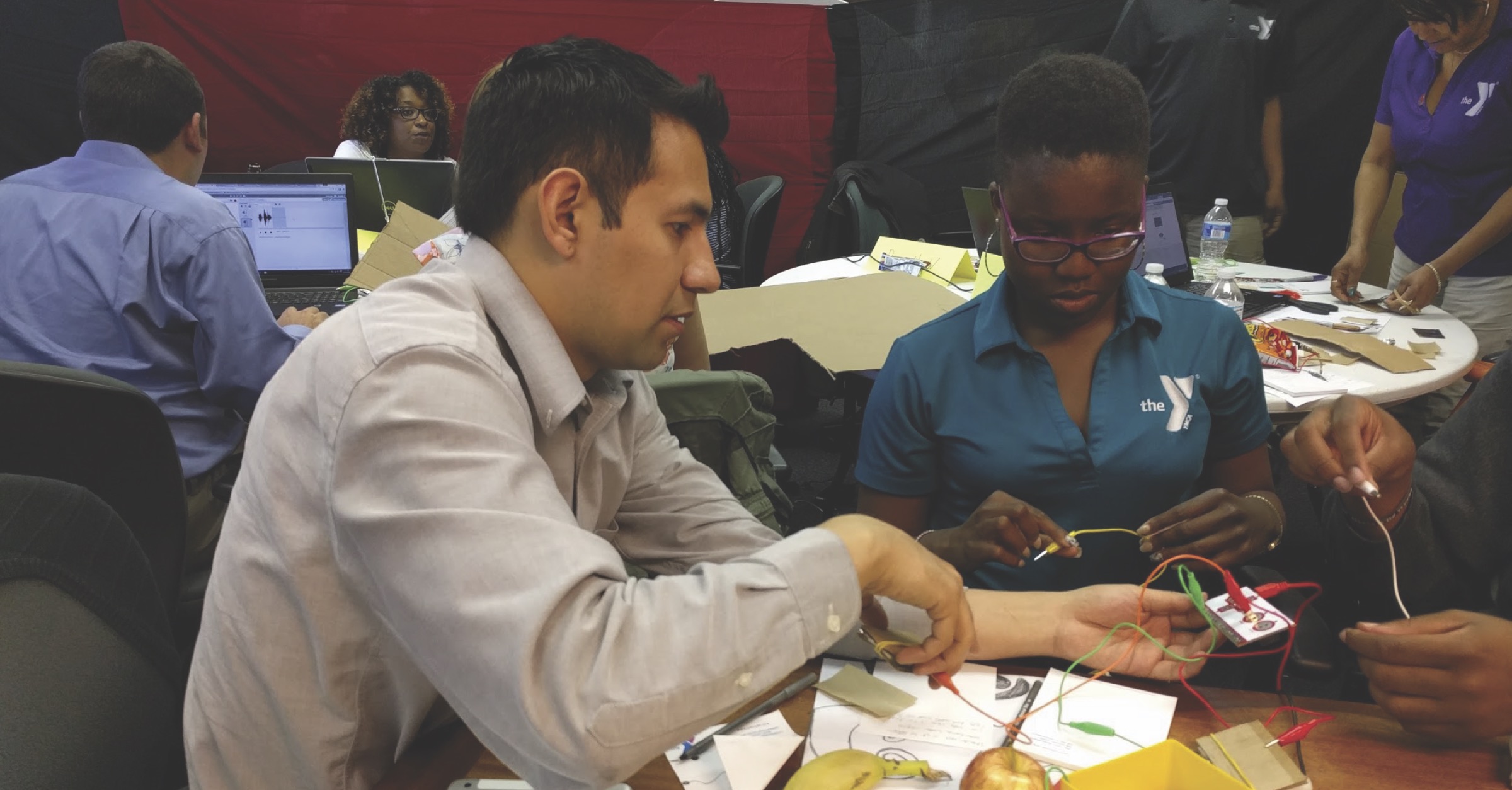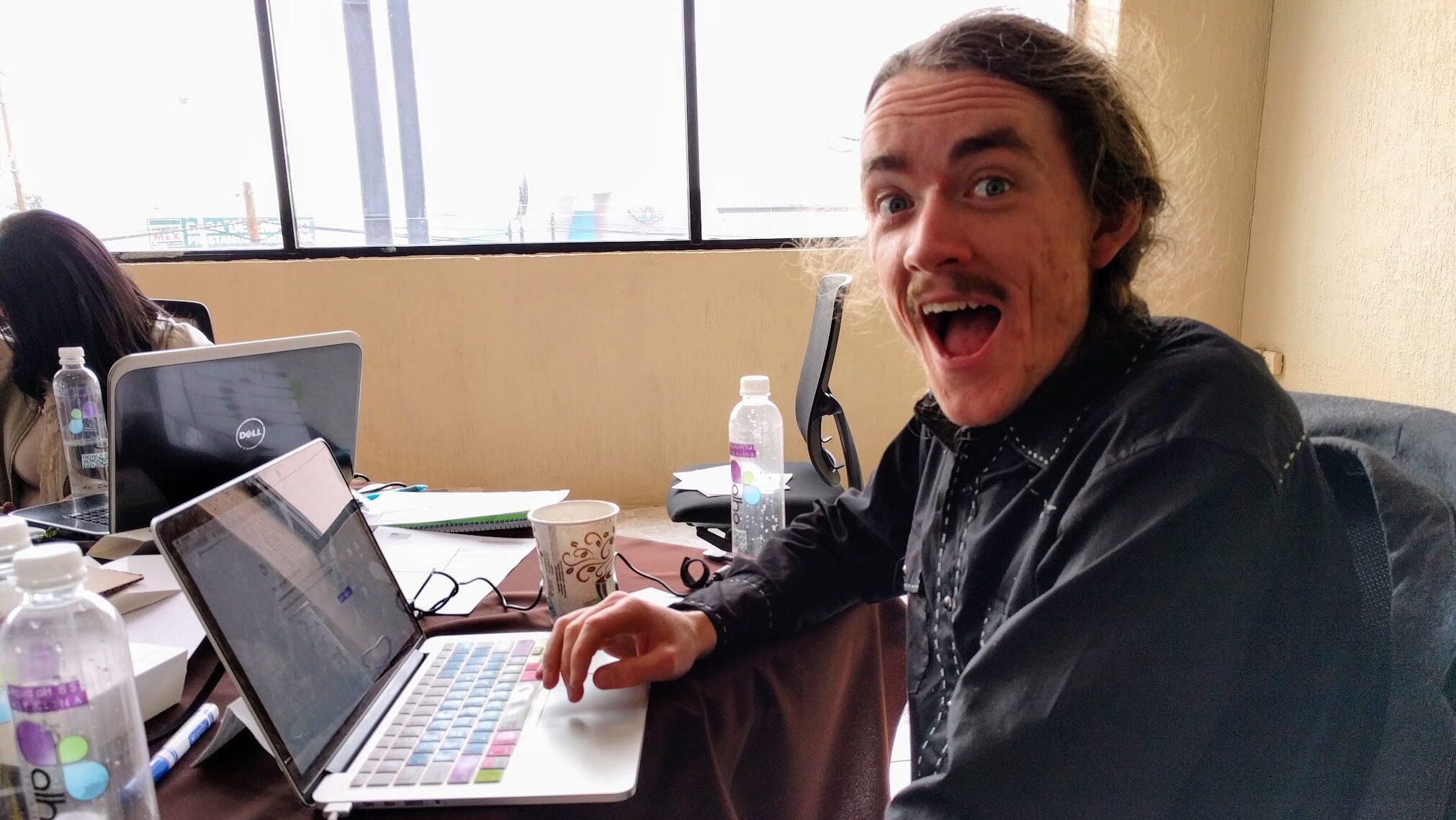Makey Makey #

Makey Makey is a USB device that allows users to connect almost anything to their computer and then use that thing as a keyboard input. Inspired by a long tradition of constructionist design, the inventors created Makey Makey to enable makers of any age (but mostly kids) to combine the computing power of their computer with the real world. I worked at Makey Makey as the VP of Community of Development for three years.
In my time at JoyLabz, I ran all of the public-facing online presence of the company. I moderated the user forum, maintained the blog, gave tech support, ran the social medias, did interviews, put on workshops and gave talks.
Communicating meta-creativity #
Jay Silver and Eric Rosenbaum spent months putting together the video used in the initial Kickstarter campaign. They used nine different examples to communicate the range of possibilities - but nonetheless, countless people would buy a Makey Makey, build a banana piano, and get stuck. They wouldn't know where to go next.
The power of Makey Makey is in the possibilities it opens up to create new things, so our communications focused on user-generated content over in-house content. Showcasing what users were doing carried the embedded message that non-experts could do amazing things using the tool. When deciding what to share, the guiding principle was to illustrate the low floor (easy to get started), the high ceiling (potential for complexity), and wide walls (breadth of possibilities at each level of complexity) of creating with Makey Makey.1
To cultivate higher ceilings and wider walls, we sponsored power-users with additional Makey Makeys and amplified their projects in our newsletter and on social media. Some of my favorite wide wall/high ceiling projects include : Planet Licker, Classic Games controller showcase , Assistive technology like this, The Nairobi Play project, and Underground Sound, just to name a few.
Makey Makey Labz #

Together with CWIST I lead the development of a platform for sharing project guides. The platform was pre-populated with existing project guides and few new ones I made for the launch. The guides came with common core and NGSS standards to help teachers use these projects in their classrooms.
I made a small series of onboarding emails that sent small sets of progressively complex project guides to the people who purchased a Makey Makey through the website.
Together with then education VP Tom Heck, I established a network of Makey Makey Teacher Ambassadors to generate content for the Makey Makey Labz platform. Here you can see a video I produced for the network.
CWIST was acquired and retired by Google in 2018. The Makey Makey Labz content was moved over to Instructables by Makey Makey's Colleen Graves, who also made a bunch of improvements. You can see that platform here.
More.... #
I’m sometimes a better talker than I am a writer, so ask me about this in person and I’ll be very happy to expand on what’s written here.

Workshop

Preparing to go on TV in Northern Mexico
Notes #
1. For more on low floor, wide walls, high ceilings, see Lifelong Kindergarten, Mitchell Resnick.
FOLD THIS IN - from other post. #
Communicating meta-creativity #
https://www.youtube.com/watch?v=rfQqh7iCcOU
Jay Silver and Eric Rosenbaum spent months putting together the video used in the initial Kickstarter campaign. They used nine different examples to communicate the range of possibilities – but nonetheless, countless people would buy a Makey Makey, build a banana piano, and get stuck. They wouldn’t know where to go next.
The power of Makey Makey is in the possibilities it opens up to create new things, so our communications focused on user-generated content over in-house content. Showcasing what users were doing carried the embedded message that non-experts could do amazing things using the tool. When deciding what to share, the guiding principle was to illustrate the low floor (easy to get started), the high ceiling (potential for complexity), and wide walls (breadth of possibilities at each level of complexity) of creating with Makey Makey.1
To cultivate higher ceilings and wider walls, we sponsored power-users with additional Makey Makeys and amplified their projects in our newsletter and on social media. Some of my favorite wide wall/high ceiling projects include : Planet Licker, Classic Games controller showcase , Assistive technology like this, The Nairobi Play project, and Underground Sound, just to name a few.